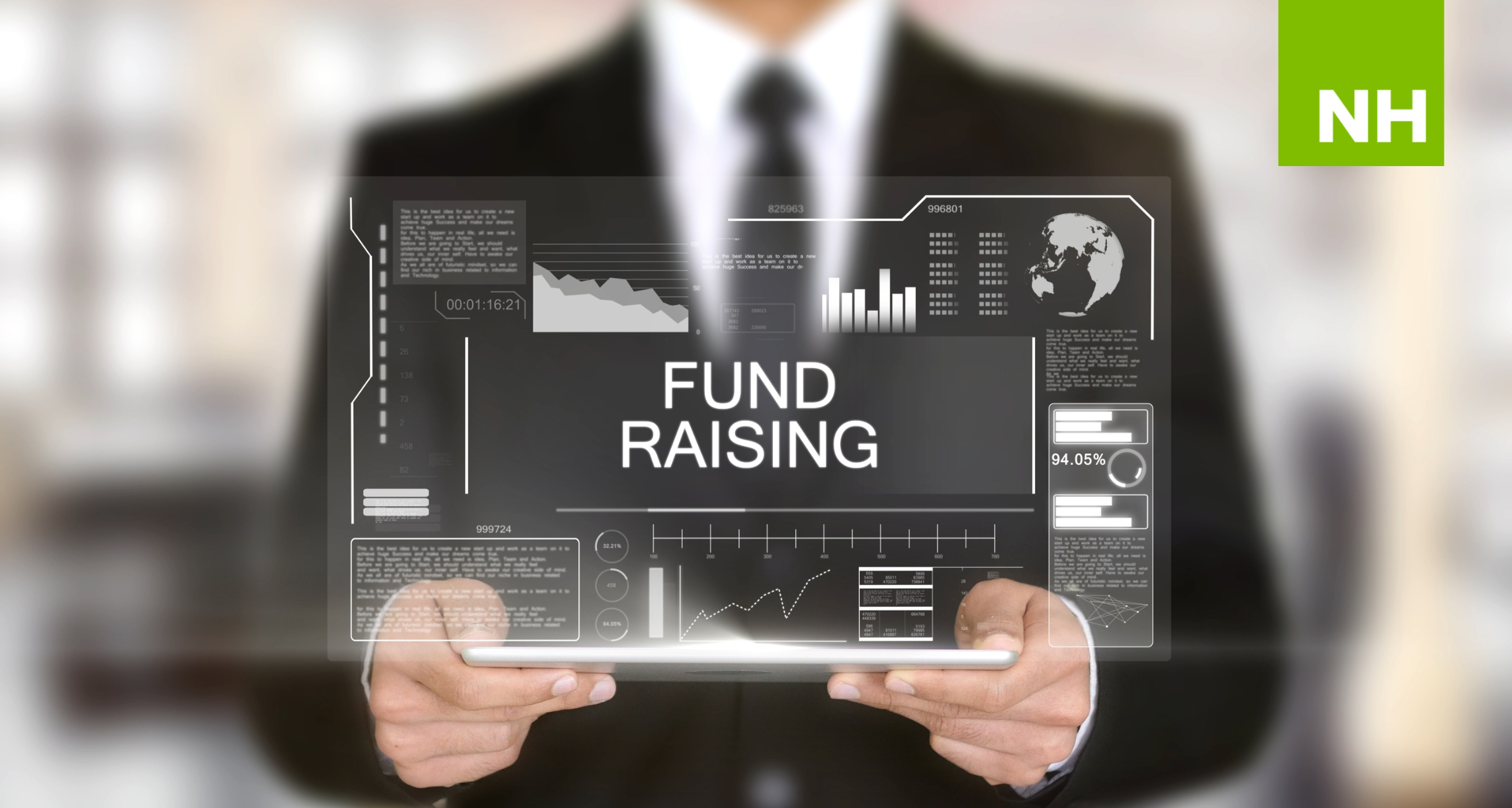Are you looking at a map or the rearview mirror?
As a fellow fundraiser, let me begin by giving you my congratulations on completing an unprecedented fundraising year. I hope you can spend some time in the next few weeks to take a break and carry out some much-deserved self-care. Be sure to take time to appreciate your team members who contributed to your organization’s fundraising success.
Although the end of a fiscal year can bring a sense of relief, the start of a new year can understandably cause anxiety. The beginning of the fundraising year often leads to fundraisers asking themselves some age-old questions: What initiatives are working? Should we eliminate the golf outing? How can I measure and track our overall fundraising program?
Sadly, often before fundraisers can start to address these questions, they are quickly distracted by the next fundraising initiative. So, most nonprofit fundraising plans aren’t supported by data, but rather stem from inertia and intuition. Thankfully, 2023 provides an opportunity to determine how to improve our fundraising efforts.
So, how successful was your organization’s fundraising last year?
You might answer this question with metrics like the amount raised, the number of new donors or the number of donations. While these basic figures can be informative from a year-over-year trend perspective, they do a poor job answering questions like: Why did these metrics change? What are the weaknesses in my fundraising plan? Where should we focus our efforts this new fundraising year?
I consider those basic metrics to be “rearview mirror” metrics as they only tell you what has happened in the past. “Rearview mirror” metrics don’t point your organization to where you would like to head. What you really need are metrics that provide you with a plan of action, or a map, to help bolster your fundraising efforts.
Map Metrics
Although the topic of fundraising metrics isn’t very sexy, the payoff from a data-based fundraising plan will be. Fifteen years ago, I worked for a healthcare consulting firm with the motto: “you can’t move it if you don’t measure it.” I believe the same is true with fundraising. You need a detailed analysis to make an actionable plan to improve your fundraising efforts. Luckily, you can achieve a thorough analysis with these 10 key data points from either your CRM or accounting software.
10 Key Data Points
To start, you will need to compile the following data points. For simplicity’s sake, assume all data points are for 2022 unless otherwise noted.
Actual Fundraising Expense (include your best guess of the salary costs associated with employee’s time spent fundraising)
Organizational Expenses
Number of Contributions Received
Number of Contributions Received
2021 Total Number of Donors
2022 Total Number of Donors
The Number of New Donors This Year in 2022 (i.e. gave in 2022, but not in 2021)
2022 Number of Retained Donors (i.e. gave in both 2022 & 2021)
The Number of Lapsed Donors in 2022 (i.e. did not give in 2022 but did give in 2021)
2022 Total Amount of Contributions from Top 5 Donors
Obviously, to determine trends over time, you will need to obtain this information for multiple years. However, much can be learned from analyzing even a single year and comparing yourself to industry benchmarks.
Because they are easy to understand, simple to calculate, and they efficiently measure the key drivers of a productive fundraising plan, I consider these metrics to be “map worthy”. Many of these can be applied to separate fundraising initiatives. But this article will focus primarily on how they can be used to assess your overall fundraising program. Also, I’ve provided several great tools toward the end of this article to help you with this process.
Donor Retention Rate
2022 Number of Retained Donors/2021 Total Number of Donors
Without question, your donor retention rate is one of the most important fundraising metrics. It’s possible to increase your giving in years where you lose more donors than you retain. But, it’s nearly impossible for a nonprofit to survive prolonged episodes of poor donor retention.
The closer your retention rate is to 100%, the better. Currently, the average nonprofit has a retention rate of about ~45% which means that nonprofits are losing more donors than they can retain.
So why is donor retention such a big deal? According to preeminent fundraising scholar, Dr. Adrian Sargeant, a 10% improvement in donor retention rate can double the lifetime value of donors in your database. If you could only track one metric annually to monitor your fundraising, it should be donor retention.
Donor Attrition Rate
2022 Number of Lapsed Donors/2021 Total Number of Donors
In addition to using this formula, you can also calculate the donor attrition rate by subtracting the donor retention rate from 1. So, for example, if your retention rate last year was 55%, your attrition rate would be 45%. The closer your attrition rate is to 0%, the better.
Churn
2022 New Donors – 2022 Lapsed Donors
Churn is a great way to assess the net result of your donor retention and donor recruitment efforts. It helps you quickly identify whether your organization is experiencing a net inflow or outflow of donors. Often new donor counts and retention are measured separately and can feel disparate from each other. Churn eliminates any noise in the data, telling you if your active donor counts are heading in the right direction.
Donation Frequency
Number of 2022 donations / Number of 2022 Donors
Donor frequency helps distill how efficiently you’re increasing the number of donations per donor. The higher your frequency, the better. A large onslaught of single gifts would lower your frequency (a great problem for any nonprofit). But, a higher donation frequency means that your average donor is giving more frequently. For example, transitioning a large group of donors from an annual gift to monthly donations would drastically improve your donation frequency. There are two major reasons why that matters. One, the higher your frequency, the more likely your donations are evenly spread throughout the calendar year. Second, and perhaps more importantly, research shows that, on average, donors who give more than once a year give a greater amount each year, are more loyal to the organization, have higher retention rates, and as result, significantly improve your organization’s average Donor Lifetime Value.
Donor Lifetime Value (DLV)
Average Annual Gift / Attrition Rate
Perhaps self-explanatory, DLV shows the lifetime value of your average donor based on your Average Annual Gift. The Average Annual Gift is simply your Total amount of Contributions divided by the total number of donations. While there are multiple ways that DLV is calculated, most require you to calculate the average amount of time your donor is active with your organization (aka Donor Lifespan). As someone who has struggled through the process of calculating the average donor’s lifespan, I would recommend the above formula instead. In addition to being incredibly easy to calculate, I find it to be a perfectly adequate way to assess trends over time. Your goal is to always be increasing your DLV as that means you are retaining more donors and/or getting more donations per donor.
Lost Potential
Donor Lifetime Value x 2022 Number of Lapsed Donors
This number should be the core motivation for you to work on donor retention. If your DLV is $1000 and you lost 100 donors last year, the lifetime value of those donors would be $100,000. If you are looking for a bit of encouragement after calculating Lost Potential, I recommend calculating your Retained Value (DLV x # of your retained donors). Retained Value gives you a clear sense of the “true worth” of the active donors in your database.
Bonus Tip
As the old saying goes, “You’re likely to raise more money from existing donors than by acquiring new donors.” If you can determine the attrition rate of the average first-time donor vs. your retained donors, you will likely affirm the merits of this saying. Such data can be helpful to share with board members or bosses that are pushing for “more new donors” when you would rather prioritize untapped opportunities within your existing donor group.
Return on Investment (ROI)
(Total contributions – Fundraising Expenses)/ Fundraising Expenses
Cost to Raise a Dollar (CRD)
Fundraising Expenses / (Total contributions – Fundraising Expenses)
ROI and CRD help measure how efficiently your investments (aka fundraising expenses) lead to funds raised. While ROI and CRD can be calculated to assess your overall fundraising program, these same metrics are excellent at assessing individual fundraising initiatives and trends over time. Most nonprofits assess their initiatives by net income (initiative revenue – initiative expenses). However, they may be surprised to learn that once staff time is included in the expenses, many of their initiatives have a negative ROI. Your goal with ROI is to be positive and the higher the number, the better.
CRD is a slightly more accessible way to communicate the success of your fundraising efforts and is simply the inverse of the ROI calculation. Basically, CRD is the amount you have to spend to raise $1. Your primary CRD goal is to be below $1. The lower your CRD, the better. Conversely, should your cost go above $1, you are losing money.
Dependency Quotient (DQ)
Total Amount of Contributions from Top 5 Donors/ Total Organizational Expenses
It is always good for organizations to assess their overall dependency on their top donors. As you can see, the DQ determines the share of your overall organizational expenses that rely on your top 5 donors’ donations. Perhaps obvious, your goal is to decrease your dependency quotient over time as that means that you are diversifying your contribution sources.
Dependency Quotient vs. Cost to Raise a Dollar
The interplay between these two metrics can provide a lot of insight as to where you should focus your efforts in the year ahead. If you are doing things correctly, you should be moving from High to Low in both DQ & CRD.
As someone who is always happy to borrow great ideas, the content to create the following table is from a great Bloomerang article: 3 Metrics to Help Measure Fundraising Effectiveness. The article also provides helpful real-life examples of how organizations can move in the right direction.
| High Cost to Raise a Dollar | Low Cost to Raise a Dollar | |
| High
Dependency Quotient |
You are investing heavily in many different strategies but are still highly dependent on just a few sources of funding. This is common for organizations who rely on just one big event a year for the majority of their funds. | You are likely receiving big donations from a handful of donors but are at risk if you lose just one donor. Do you have a safety net that would continue to fund your mission? |
| Low
Dependency Quotient |
You are likely investing heavily in fundraising programs that provide a diverse group of funders, but you’re spending a lot to make that happen. Are you missing opportunities to go after major gifts? | Keep up the good work! This is the ideal scenario. |
Is your head spinning yet?
While this all may seem overwhelming, much of the math above could be accomplished by the average third grader. The only thing keeping you from obtaining a clearer picture of your organization’s fundraising is a bit of time and some elbow grease. Luckily, I am happy to report that there are several resources available to help calculate the metrics you need to guide your fundraising plan:
Free Resources from The Timothy Group
We have created a simple, yet effective spreadsheet that calculates all the above metrics by simply providing the top 10 data points above. The spreadsheet also produces 13 graphs & charts to provide visuals for your organization’s past fundraising trends which are great for copying and pasting into your next board fundraising report. Also, for those of you that are interested in assessing your fundraising initiatives at a more granular level, we’ve added a bonus Initiative ROI Cheat Sheet that will quickly show you where your organization is getting its biggest bang for the buck, and perhaps more importantly, which initiatives should be discontinued. If you are interested in obtaining the spreadsheet, download it free here: Metrics Tool & Fundraising Metrics Slides
Your current CRM
While not every CRM has amazing reporting functionality, most do calculate many of the above metrics. I suggest that you try diving into the CRM’s dashboards or searching one of the above metrics or data points in their help/resources section.
FundraisingReportCard.com (FRC)
By simply importing your organization’s gift dates, gift amounts, and profile ID (most systems have an anonymized alphanumeric ID available), FRC will not only calculate many of the metrics above, but it also quickly produces beautiful graphs, trend lines, and segmentations that make analysis a snap. If you are lucky enough to be using Kindful or Little Green Light as your CRM, they have a very simple integration that will do all the heavy lifting for you. Even if you don’t use their dashboards, be sure to check out their benchmarks page as it provides nonprofit sector-specific benchmarks that instantly help you see how you are doing compared to your sector.
Fundraising Effectiveness Project (FEP)
The Association for Fundraising Professionals has created a set of free downloadable spreadsheets that will help you calculate many of the top metrics.
You can do this! (and we’re here to help)
With no obligation, I would be happy to provide 30 minutes of my time to help you through this process. Whether it be helping you obtain your key data points, using one of the above tools, or analyzing your results, The Timothy Group is here to help. We have worked with many nonprofits to assess their programs and I promise it will be worth the effort. Let’s leave intuition and inertia in the review mirror and make 2023 the year you implement a data-driven fundraising plan!
Note: The above article is intended to provide quality actionable content for the reader. Jonathan Helder and the Timothy Group do not receive any compensation for the referral links to the article and/or fundraising tools listed above.
Note: The above article is intended to provide quality actionable content for the reader. Jonathan Helder, CFRE, ECRF, Consultant, does not receive any compensation for the referral links to the article and/or fundraising tools listed above.






